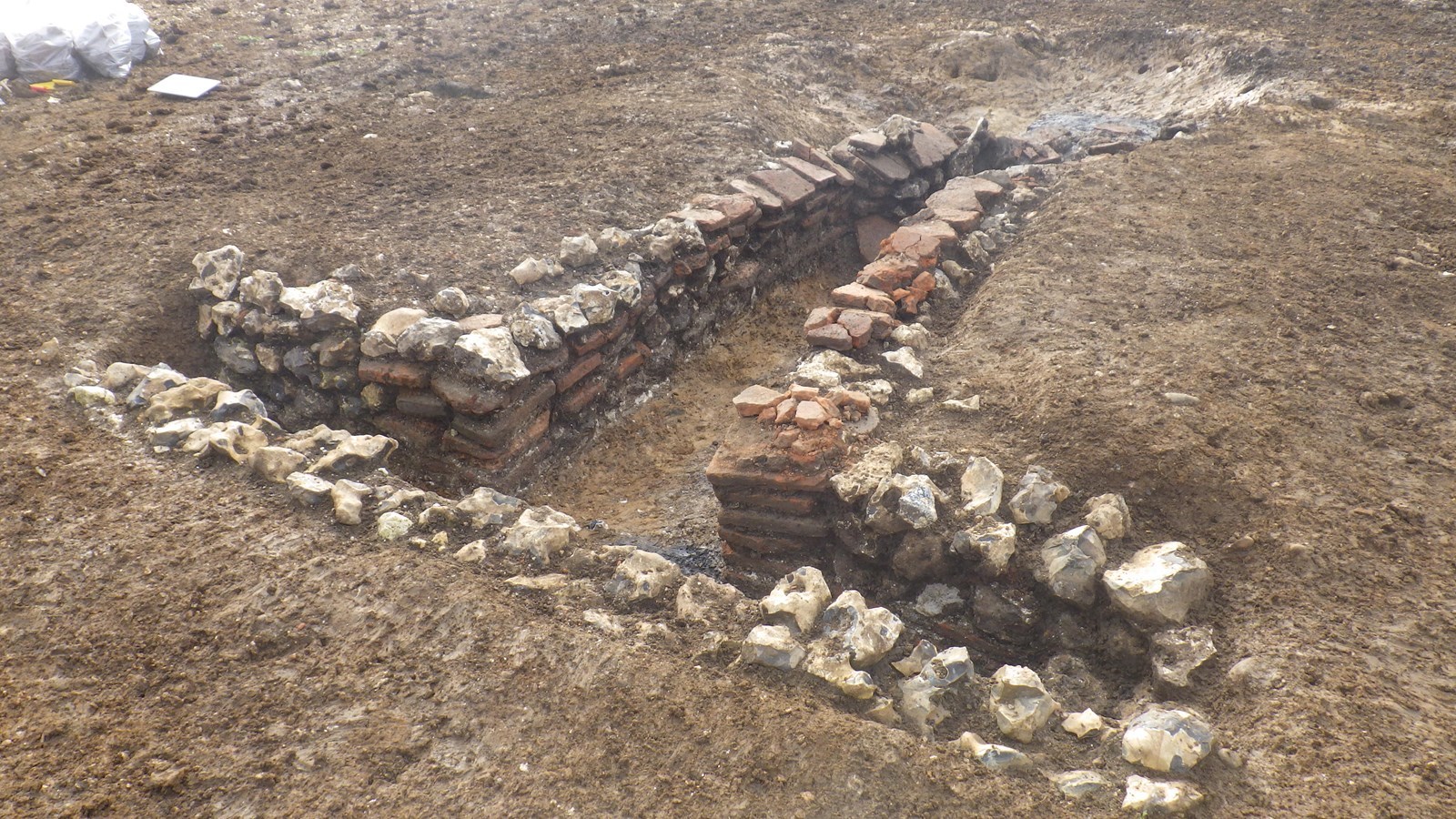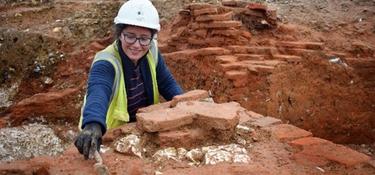The site has produced one of the best preserved Roman lime kilns in the country.
Paul Clark, Associate Director of CgMs
Archaeologists have discovered that Prologis Park Hemel Hempstead at Maylands Gateway, is building on a history of industrial activity at the site. Led by CgMs and Oxford Archaeology, the team has excavated a 2 hectare area. Among the features they uncovered were two kilns, both of which were probably used to make building materials for the nearby Romano-Celtic temple complex at Wood Lane End.
Both kilns appear to be have been constructed in the late 1st to 2nd century AD, at about the same time as the temple complex. The best preserved is a lime kiln that would have been used to produce lime mortar. Built into the side of a large chalk quarry, the kiln comprises two circular chambers with draw holes – that are still intact – from which the mortar was extracted. When discovered, the kiln still contained the alternate layers of chalk and fuel with which it had been stoked for the final firing.

Close to the lime kiln, the archaeologists discovered a less well-preserved tile kiln. Built of tile and flint, this rectangular kiln with its network of flues, was used to fire the many clay tiles that would have been needed to build the temple.
“The site has produced one of the best preserved Roman lime kilns in the country, further enhanced by its potential association with the tile kiln and the construction of the temple complex,” said Paul Clark, Associate Director of CgMs. “It will hopefully provide further insights into the construction methods used in the temple complex and how such large-scale projects were organised within Roman Britain.”

It is believed that the temple was abandoned at the end of the 2nd century and that it may have been demolished to provide building materials for the fortifications of Verulamium (St Albans), which was constructed at about this time. The Maylands Gateway area appears then to have been used for agriculture, with field systems and corn dryers established on the site.
However, it seems that not all the building materials from the temple complex were taken to Verulamium. Some of the tiles appear to have made their way back to the site of the original kilns, where they were reused to construct corn dryers, three of which were discovered by the archaeologists, along with evidence of the agricultural landscape.
As the team uncovered the structures, they recorded their findings and the Roman brick and tiles – together with other findings such as pottery, metalwork and bone – have been removed for further study and preservation.
The site has now been handed back to the construction team at Winvic, the main contractor at Prologis Park Hemel Hempstead. As we build for the future, it is fascinating to discover that there was industrial activity on the Prologis Park site over 2,000 years ago.

